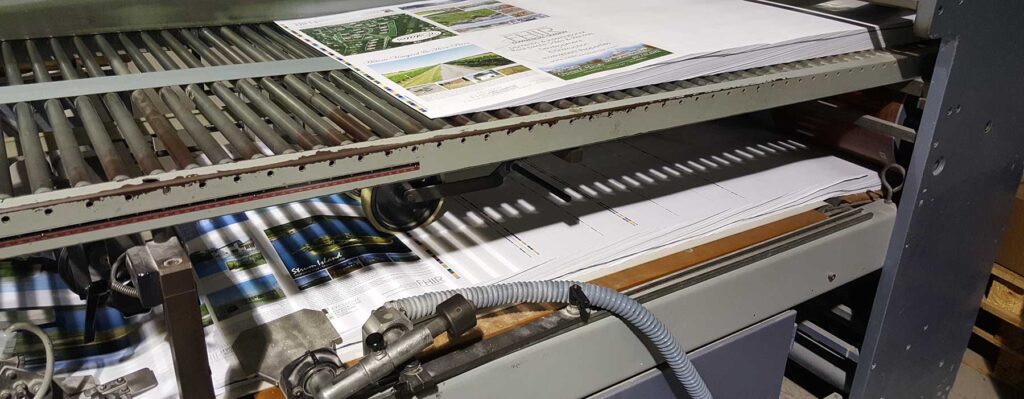
Estimating the price of printing is a very custom process.
Customers often ask why the price of commercial printing keeps changing. The truth is that the price changes depending upon the quantity, the paper, and the inks. Consequently, every single print job is unique. We work with our customers to find the best solutions for their budget and goals for the printed pieces they order. We often make suggestions for changes in the choice of paper or inks. Even the selection of a printing press can make a difference in cost, so we offer options to our customers to choose among. There is a lot to consider, so let’s examine all the elements separately.
Paper
The choice of paper will affect your printing costs. For example, we received a request for newsprint, because the customer believed it to be the cheapest paper for a publication with timely information that would soon be thrown away. However, it turns out that there are cheaper papers than newsprint. We were happy to develop a quote on the cheaper paper for them. There is a huge assortment of papers, including recycled papers, with lots of variety in color, texture, thickness, durability and price. Let us help you choose the best option for your project!
Inks
The number of inks that a printing project requires will affect the price. A separate printing plate must be made for each ink. Therefore, the more inks, the more printing plates. The time it takes to make the printing plates and clean up after the printing is done must be factored into the final price of printing. That is why a one-color project costs less than a six-color project.
Not only do the number of inks affect the price of printing, but spot colors are more expensive than process colors. Spot colors are special inks that are mixed according to prescribed formulas. They require that somebody mixes them. You can even have a custom ink made! Consequently, spot colors are more expensive. Process colors are standard inks in Cyan, Magenta, Yellow, and Black. These ink colors can be purchased “off-the-shelf” from an ink manufacturer, so they are cheaper.
Quantity
Since printing plates only need to be made once, and clean up only needs to be done once, the set up costs remain the same whether we print 1 or 100,000. So, the price-per-piece goes down when you print a large quantity. For small quantities, we can print on our digital press, which doesn’t need printing plates or clean up, thus reducing the price-per-piece. The digital press can print variable data, too, making it perfect for direct mail. Here is an article with more information regarding unit price vs. quantity that you may like.
Coatings & Bindings
Coatings and Bindings are additional services the result in increased prices, but they are necessary for some projects. To enhance a printed piece with shine, texture, and durability, coatings are added after printing. Spot UV coating reveal a few areas of shininess while the rest remains matte, resulting in a dramatic presentation. Soft Touch is the name of a coating that adds a velvety softness to the paper. Some coatings prevent fingerprints. There are many coatings to consider for the finishing touch on your printed piece.
Bindings come in a wide variety of options for printed pieces that involve multiple pieces of paper that must not get separated. We will recommend the bindings that satisfy the requirements of your project, your budget, and how the project will be used.
Finally…
By now you can see that there are a lot of factors to consider when we develop a quote for someone. That is why the price of printing changes! We strive to provide the best quote we can give to meet your budget and goals for your project.
